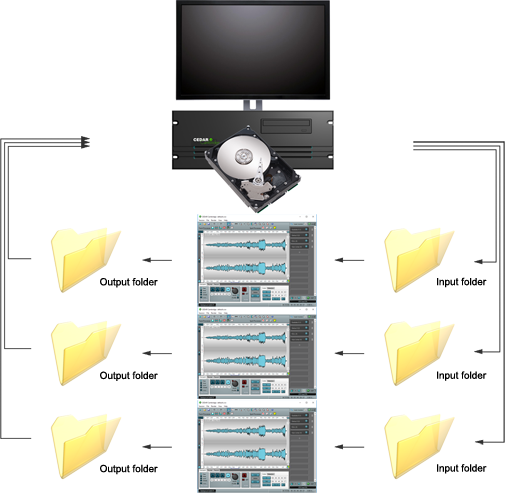Batch Processing

An audio restoration system that works as quickly, effectively and simply as a print server to handle huge volumes of material quickly and productively... That's the concept that lies behind the CEDAR Cambridge batch processing system.
Imagine that you are working on a large network of ingestion systems, RAID arrays and workstations, and that you need to access the CEDAR Cambridge's audio restoration and other processes. No problem! You can be sitting on the other side of the facility to the CEDAR Cambridge server, but if you can see the its input folder, you can simply drag-and-drop your audio into this, whereupon it will add the file to the queue and later place the processed audio in your chosen destination. This means that every seat in every studio can have access to a set of pre-determined restoration setups, no matter where the CEDAR Cambridge Server is physically installed.
Combining background processing and batch processing
It's also possible to place multiple instances of CEDAR Cambridge Server in background mode, each with its own batch processing input and output folder, and each with different processing chains and parameter sets. The output folders can even be located on different servers around the network. You can set up as many processing environments as you like - say, a declick and debuzz batch processor for old recordings, a mild dehissing batch processor for high quality tapes, and so on - and then you and your colleagues can drop your audio into the appropriate input folder whenever needed. CEDAR Cambridge Server will process the files according to each setup, and the results can be made available to anybody on the network who is authorised to receive them them.
Reporting from the Batch Processor
If the Report Generator is installed on your system, the Batch Processor allows you to generate an individual report in either XML or HTML format for every track it processes. The reports are stored alongside the processed audio, so large quantities of audio and processing metadata can be added efficiently to users' databases and asset management systems.